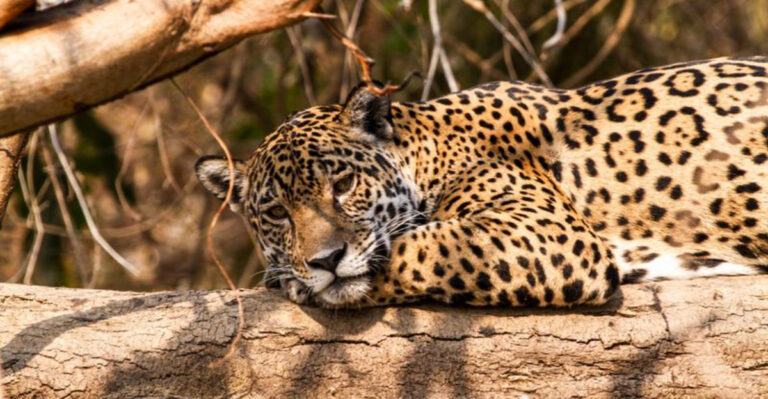Timber Rattlesnake Vs. Eastern Diamondback: 8 Key Differences Of These Fanged Serpents
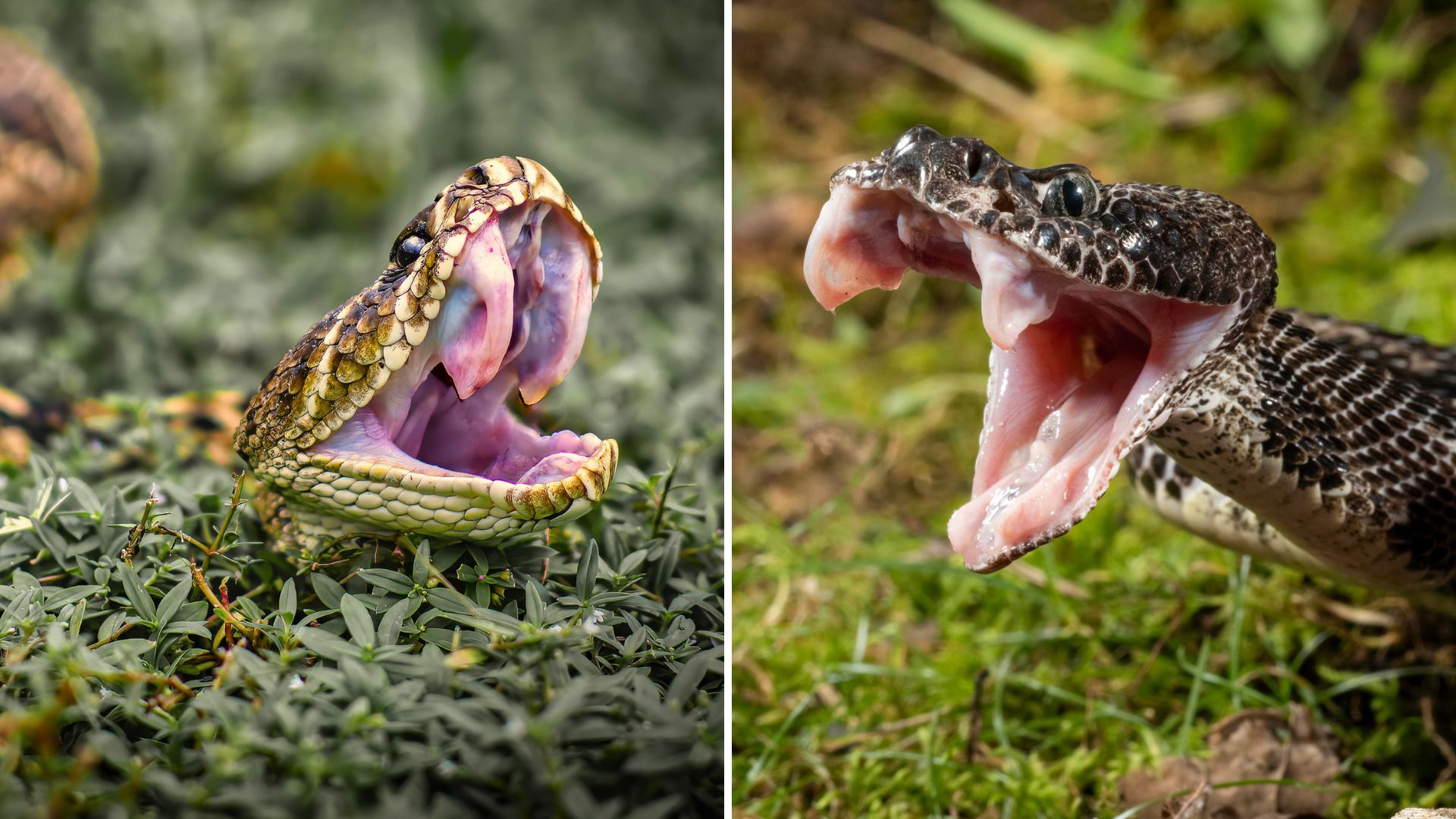
The Timber Rattlesnake and the Eastern Diamondback are among the most intriguing serpents in the wild.
These fanged creatures, both belonging to the pit viper family, boast unique characteristics and behaviors.
Despite sharing some similarities, they exhibit striking differences that set them apart. Understanding these differences can enhance your appreciation for these remarkable snakes.
1. Habitat Preferences
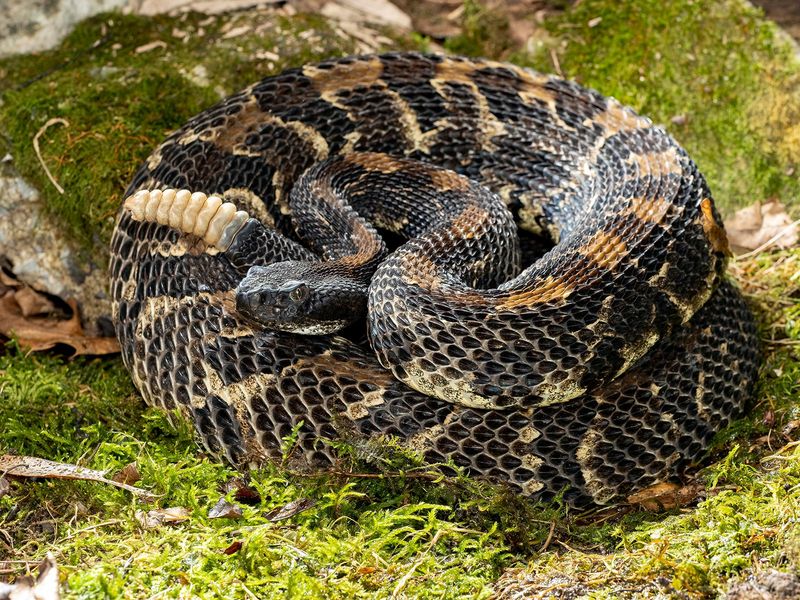
Timber Rattlesnakes thrive in densely wooded areas where they can blend seamlessly with the forest floor.
They are often found in deciduous forests, where the thick vegetation provides ample cover from predators. These snakes are adapted to cooler climates and can be seen basking on warm rocks or logs.
In contrast, the Eastern Diamondback prefers the warm, sandy habitats of the southeastern United States. It’s commonly found in palmetto flatwoods, coastal dunes, and pine forests.
This snake is well-suited to the hot, humid environment, often seeking shelter in gopher tortoise burrows or under brush piles.
The difference in habitat is crucial because it influences their behavior and survival strategies. While the Timber Rattlesnake relies on camouflage within the leafy understory, the Eastern Diamondback benefits from its ability to navigate open, sunlit spaces.
Both rely on ambush tactics, but their chosen terrains dictate their hunting techniques. These habitat preferences highlight the adaptability of these snakes to their respective environments.
2. Physical Appearance
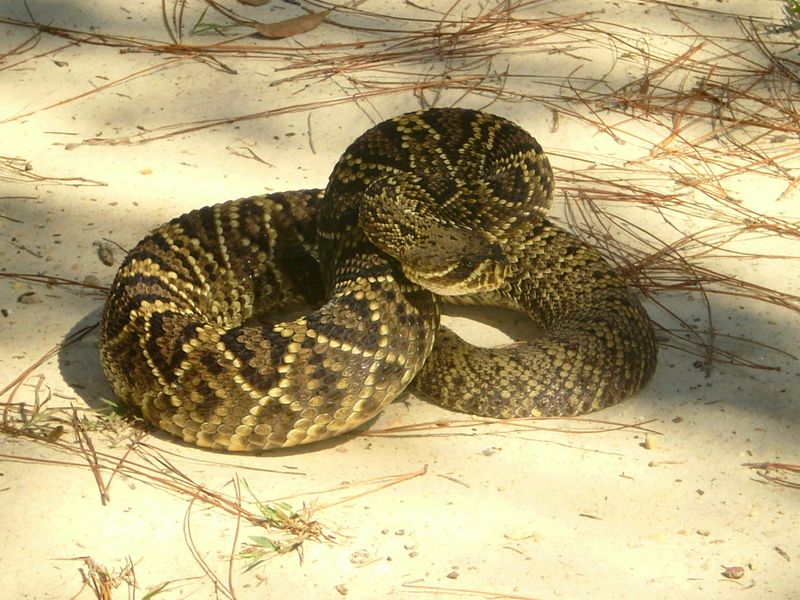
The Timber Rattlesnake and the Eastern Diamondback have distinct appearances that make them identifiable.
The Timber Rattlesnake sports a pattern of dark bands across a lighter brown or gray body, which helps it blend into the forest environment. It has a robust build, with a noticeable rusty stripe running down its back.
The Eastern Diamondback, however, is more striking with its diamond-shaped patterns edged in white or yellow on a darker brown or olive body.
These diamonds run the length of its body, providing a stark contrast against its background. Its head is large and broad, with heat-sensing pits between the eyes and nostrils.
The size difference is also notable; the Eastern Diamondback is the largest rattlesnake species, sometimes reaching lengths of up to eight feet, while the Timber Rattlesnake is generally smaller.
These physical traits not only aid in identification but also play roles in their survival. The Timber Rattlesnake’s subdued colors allow it to remain concealed, while the Eastern Diamondback’s bold patterns serve as a warning to potential predators.
3. Rattles And Warning Signals
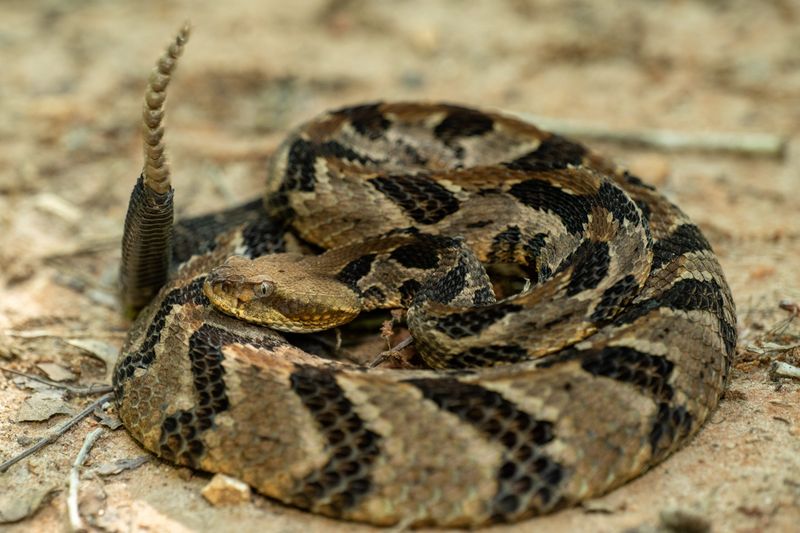
Both the Timber Rattlesnake and the Eastern Diamondback use their rattles as a primary defense mechanism, but their warning signals can differ.
The rattle of a Timber Rattlesnake produces a softer, more subtle sound, which might not be as easily heard over long distances. This is partly because of the denser habitats they inhabit, where sound doesn’t travel as far.
The Eastern Diamondback, on the other hand, generates a loud and rapid rattle, designed to be heard over the open terrains it frequents. This rattle is a clear warning to any approaching threat.
The vibrations can be felt as well as heard, adding an extra layer of deterrence. The construction of the rattles is similar, with each segment adding to the noise-making ability as the snake ages.
These differences in their rattling serve as adaptations to their environments, ensuring that their warning is appropriate for the context.
This adaptation is vital for survival, helping to prevent unnecessary confrontations with larger animals or humans.
4. Diet Variations
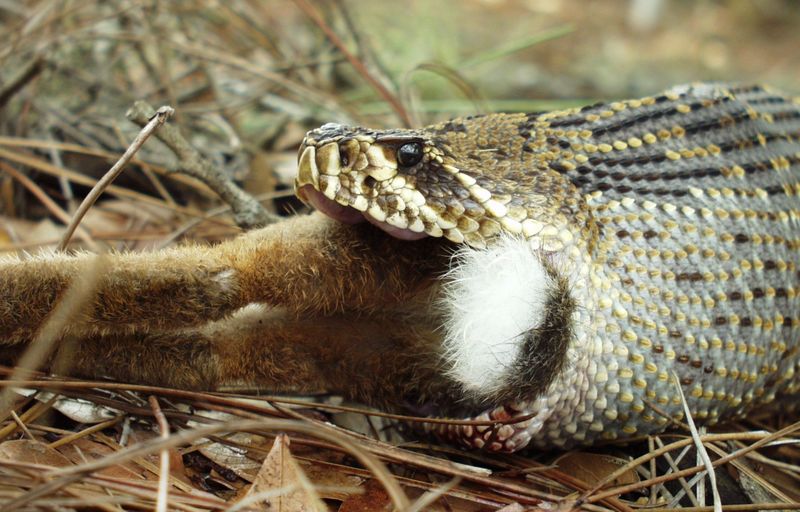
The diet of these two rattlesnake species varies due to their differing habitats and prey availability.
Timber Rattlesnakes primarily feed on small mammals such as mice, chipmunks, and squirrels. Occasionally, they might consume birds and frogs. Their forest habitats provide a rich hunting ground for these creatures. They use their camouflage and patience to ambush prey effectively.
The Eastern Diamondback, living in more open areas, has a diet that includes larger mammals such as rabbits and rats, which are more abundant in its environment. It also occasionally eats birds.
Due to their size, Eastern Diamondbacks can consume larger prey, allowing them to go for longer periods between meals.
Both use venom to immobilize their prey before consumption, but their hunting techniques are adapted to their respective environments.
Timber Rattlesnakes rely heavily on stealth and surprise, whereas Eastern Diamondbacks may employ more direct approaches, given the openness of their terrain. These dietary preferences highlight the adaptation of each species to its ecological niche.
5. Reproductive Behavior

The reproductive behaviors of these rattlesnakes show fascinating differences.
Timber Rattlesnakes give birth to live young, typically in late summer or early autumn. The young are born fully developed and independent but are vulnerable to predators.
Mothers often give birth in secluded areas where the young can remain hidden until they are strong enough to fend for themselves.
In contrast, the Eastern Diamondback lays eggs, a reproductive difference that is significant. The eggs are deposited in burrows, where they incubate until they hatch.
This difference in reproductive strategy is reflective of their environmental adaptations.
The live birth of Timber Rattlesnakes allows for more immediate mobility of the young in dense forest environments, whereas egg-laying is suited to the more stable, warm conditions of the Eastern Diamondback’s habitat.
These strategies ensure the continuation of their respective species in their natural environments. The care and protection strategies differ, but both species ensure the young have the best start possible in their habitats.
6. Venom Characteristics
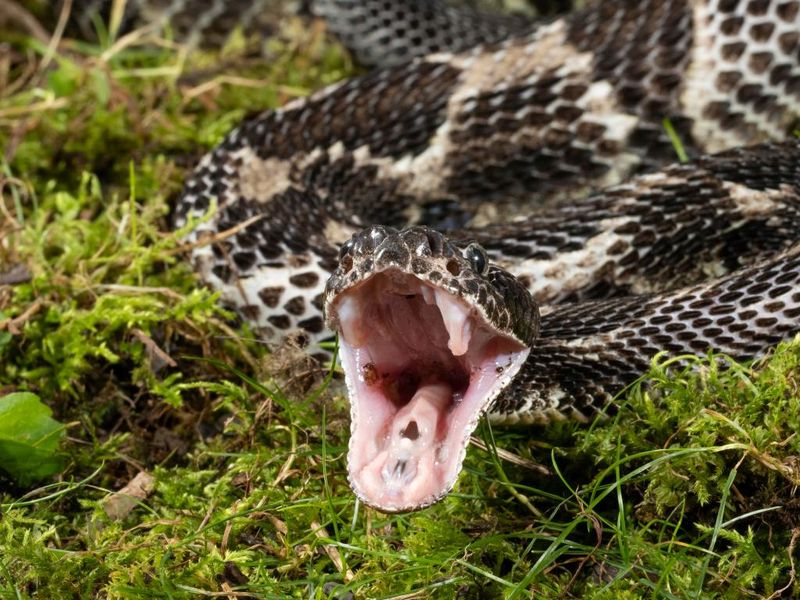
The venom of Timber Rattlesnakes and Eastern Diamondbacks differs in composition and effect, a crucial factor for their survival and hunting strategies.
Timber Rattlesnake venom is primarily hemotoxic, affecting the blood and tissues of its prey. It causes extensive damage, aiding in the immobilization and digestion of its prey.
This type of venom suits its hunting style, which relies on patiently waiting for prey to be subdued over time.
Eastern Diamondback venom, on the other hand, is a potent mix of hemotoxins and neurotoxins. This combination not only breaks down tissue but also affects the nervous system, leading to quicker incapacitation of prey.
This is advantageous in open habitats where rapid immobilization is necessary to prevent prey from escaping.
Both types of venom are highly effective, but their differences highlight the adaptations to their environments and prey types.
The potency and composition of their venom are a reflection of their ecological roles and evolutionary history.
7. Behavioral Traits
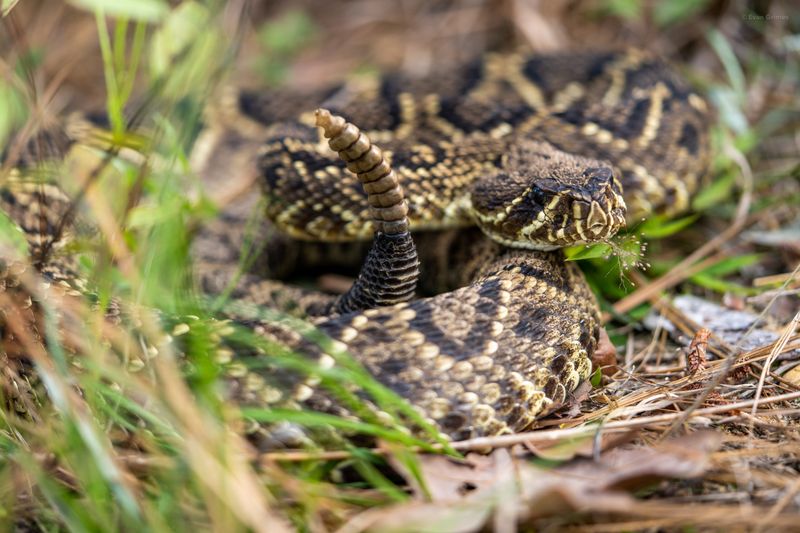
Behaviorally, these rattlesnakes exhibit distinct traits reflective of their environments.
Timber Rattlesnakes are often more reclusive, preferring the cover of forests where they can avoid detection. They are ambush predators, lying in wait for unsuspecting prey to cross their path. This stealthy approach is effective in the dense underbrush of their habitats.
In contrast, Eastern Diamondbacks display more assertive behaviors in their open environments. They are known to be more aggressive when threatened, relying on their size and potent venom for defense. The openness of their habitat requires a more proactive approach to threats.
These behavioral traits are essential for their survival, dictating how they interact with their environment and other creatures.
Both species exhibit territorial behaviors, but the Timber Rattlesnake’s reliance on camouflage contrasts with the Eastern Diamondback’s boldness.
These behaviors play a significant role in how each species navigates its world, ensuring they thrive in their respective domains.
8. Conservation Status
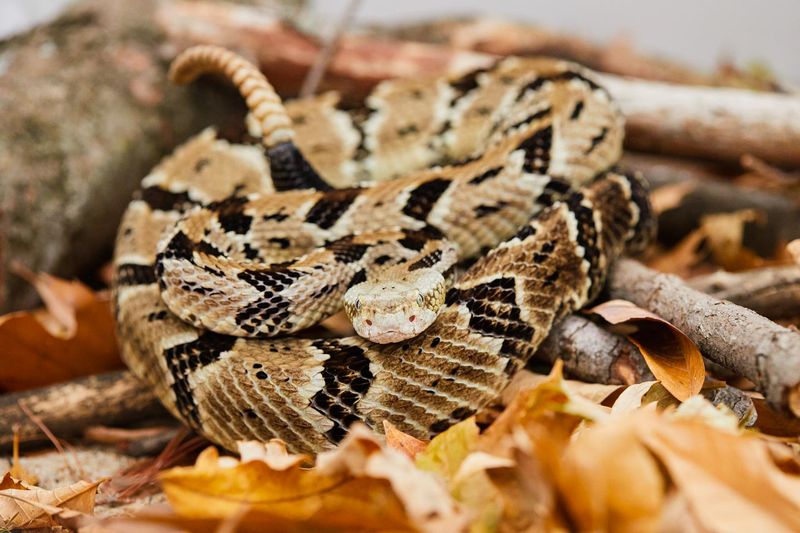
Conservation concerns for these snakes differ, reflecting their unique challenges.
The Timber Rattlesnake is listed as a species of concern in many states, primarily due to habitat loss and human encroachment.
As forests are cleared, their natural habitats diminish, leading to population declines. Conservation efforts focus on habitat preservation and reducing human-snake conflicts.
The Eastern Diamondback, although not currently endangered, faces threats from habitat destruction and hunting. Its striking appearance makes it a target for collectors, exacerbating its vulnerability.
Conservationists are working to establish protected areas and educate the public on coexistence with these snakes.
Both species highlight the importance of biodiversity and the need for targeted conservation strategies. Efforts to protect their habitats and educate communities about their ecological roles are vital.
By understanding and addressing the specific needs of each snake, conservationists aim to ensure their survival for future generations.
These efforts underline the broader challenges of wildlife conservation in changing landscapes.


